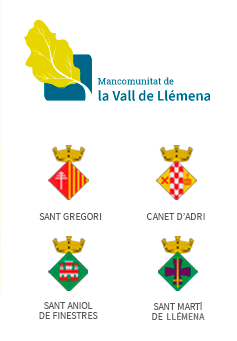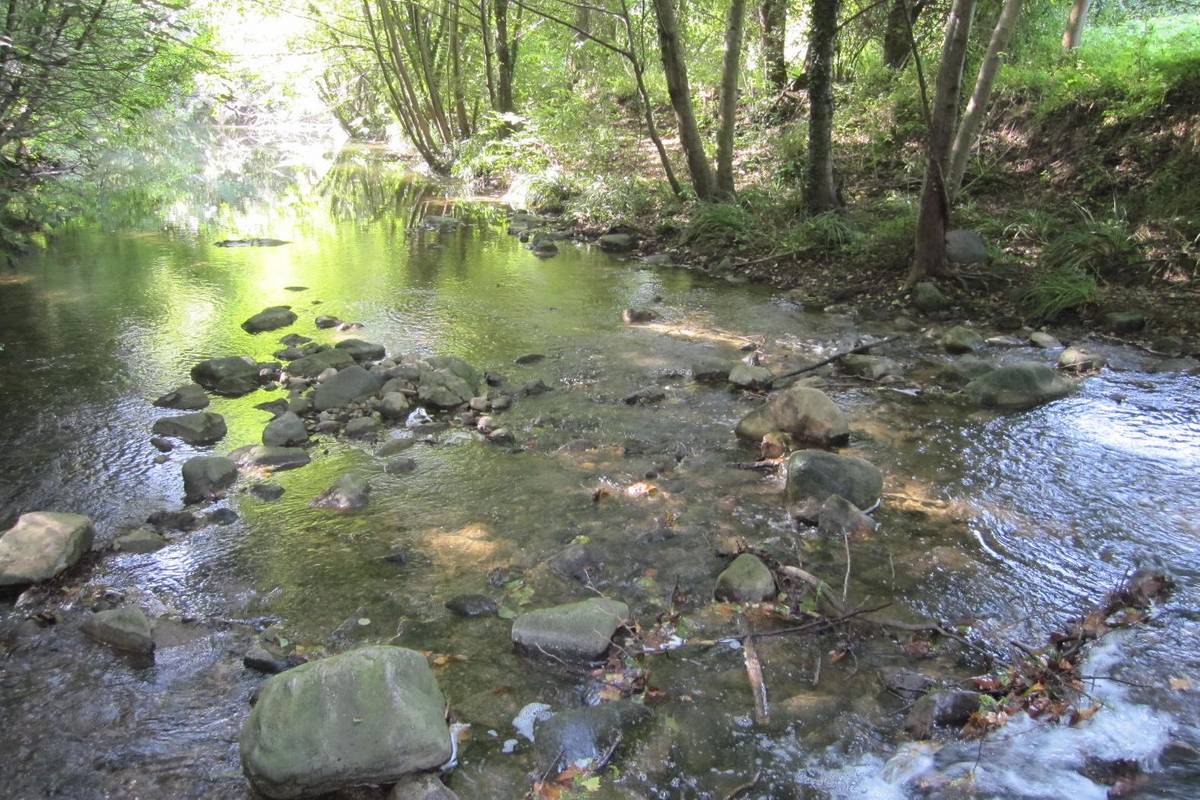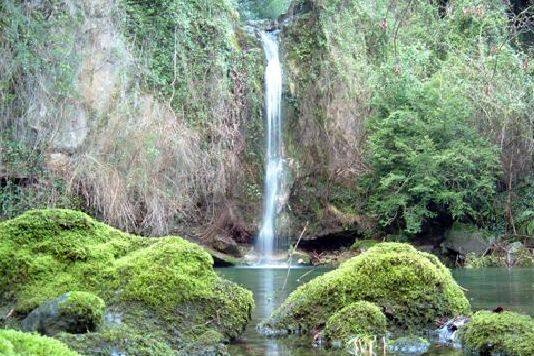Technical cookies are absolutely essential for the website to work properly. This category only includes cookies that guarantee the basic functions and security functions of the website. These cookies do not store any personal information.
Rivers, creeks and streams
To talk of the watercourses of the Vall de Llémena is to talk of a river and a huge collection of intermittent streams that accompany it. At the heart of the valley is the intermittent Llémena stream, which gives the valley its name. This runs through mountain ranges, from its source in the Finestres mountains until it reaches the Sant Gregori plain, where it finally leads into the River Ter.
There are a great number of streams that collect waters that lead to the Llémena. Examples are the Canet, the Mal which runs from Santa Maria del Freixe to Sant Aniol, or the Bastana which runs down from the hill of the same name to Granollers de Rocacorba. Around these streams we can find many different species of tree, from hazels (Corylus avellana) which are often accompanied by laurels (Laurus nobilis), several types of willow (Salix sp.), as well as magnificent alders (Alnus glutinosa) accompanied by elms (Ulmus minor) and narrow-leafed ashes (Fraxinus angustifolia).
Along the lower reaches of the stream, around the Sant Joan and Sant Gregori plains, the typical trees on the banks are black poplars (Populus nigra) and planes (Platanus x hispanica), foreign species that have been planted for their timber.
Amongst the most common inhabitants of the riverside woodlands in the valley are the mallard (Anas platyrhynchos), the little grebe (Tachybaptus ruficollis), the common moorhen (Gallinula chloropus), the lesser spotted woodpecker (Dendrocopos minor), the marsh tit (Parus palustris), the white-throated dipper (Cinclus cinclus) and the extravagant Eurasian wryneck (Jynx torquilla). Amongst the amphibians worthy of mention are the Mediterranean tree frog (Hyla meridionalis), the common and natterjack toads (Bufo bufo and B. calamita) and Perez's frog (Pelophylax perezi).
There is also the Pyrenean brook salamander (Calotriton asper) near the source of the Llémena, above Sant Aniolde Finestres, and also the Caspian turtle. Equally important are the populations of Mediterranean barbels (Barbus meridionalis) and damselflies and dragonflies (Coenagrion mercuriale and Oxygastra curtisii) protected under the Habitats Directive. In a unique habitat such as the confluence of the Llémena and the Ter, there are also populations of otters (Lutra lutra).






